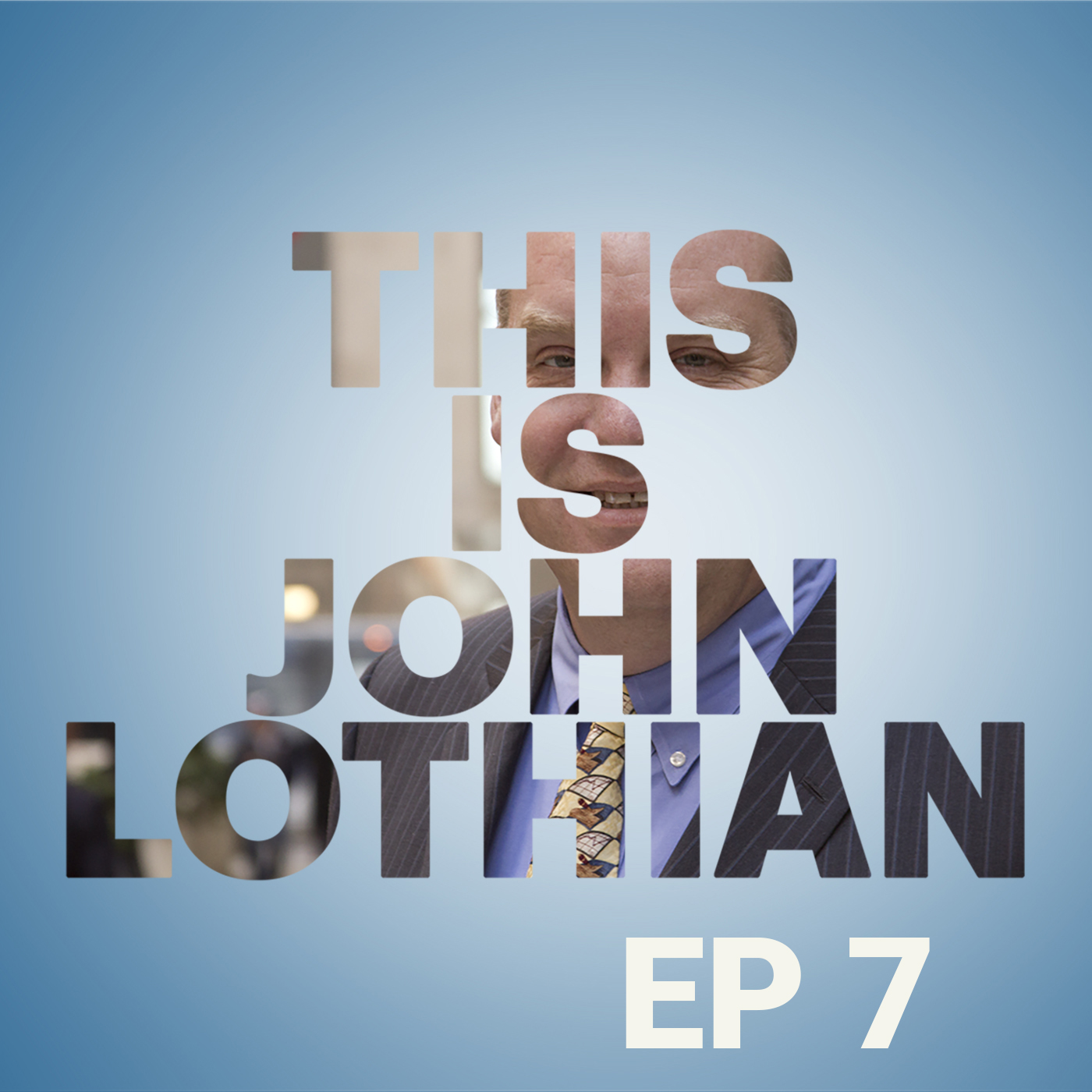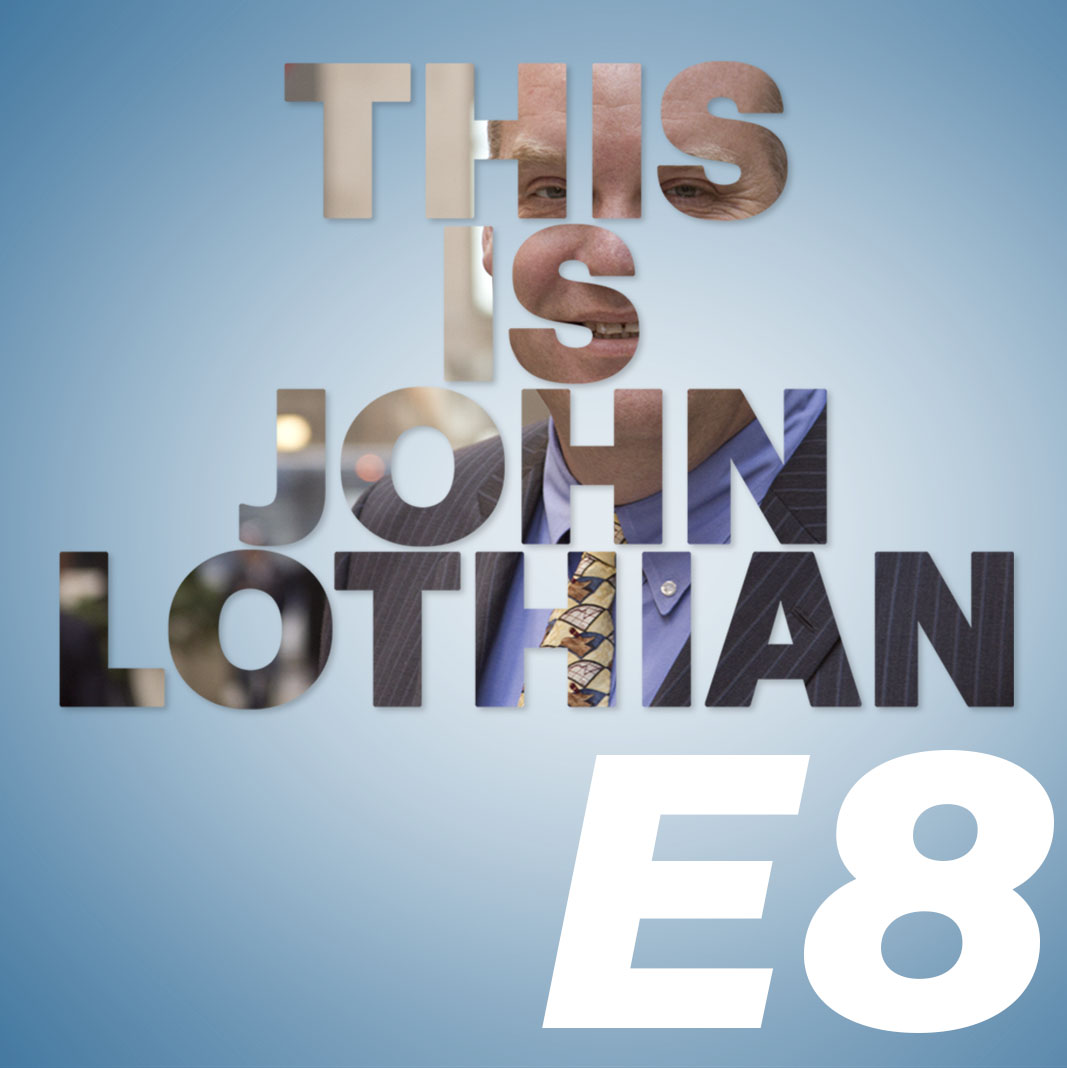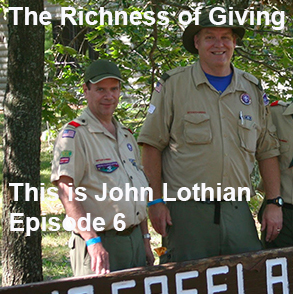Standing Out in 1999 Led to a Career Standing Up For The Markets
Twenty-five years ago, in August 1999, I began producing this daily newsletter as a marketing and networking tool to promote my electronic trading brokerage services, Commodity Trading Advisor offerings, and my personal brand.
I was competing with large discount commodity firms that were transitioning to electronic trading, and I needed to market myself and my firm and find a way to stand out, but I didn’t have many monetary resources to do so. Therefore, I had to think outside the box.
My specific goals at the time were to increase the number of my brokerage clients at The Price Futures Group, to raise funds for Defender Capital Management and Hargrave Financial Group, two CTAs I represented, and to elevate my profile amid industry changes that I felt could undermine my career path.
I feared that the introduction of single stock futures could change the face of the industry, potentially making standalone introducing brokers like The Price Group obsolete. I wanted to learn as much as possible about SSFs and share this information. I was also concerned about the impact of electronic trading on open outcry trading and its related careers, and I wanted my friends and colleagues in the industry to be aware of the risks they were facing. Additionally, I worried that backlash from competing brokers over my participation in the ‘wild west’ of the internet—Usenet, the Reddit of its day—might damage my reputation. My hope was to address both my goals and my fears in a positive way that would benefit myself and my community.
My specific strategy for the newsletter was unique. I wanted to experiment with something called a weblog and a concept called viral marketing. The weblog was created in 1997. By combining these two elements, I aimed to create a publication that would gather all the information I could find about the changes occurring in the industry, compile it into a single email, and send it to clients, colleagues, leads, acquaintances, and others. In the early days of the internet I had seen some incredibly successful examples of viral marketing, including one for the online brokerage firm National Discount Brokers that had involved a quacking duck.
The pace of change in the industry was so rapid in those days that no publication could keep up with the constant flow of news. None of the weekly or biweekly newsletters seemed able to meet the challenge. In the meantime, there was too much risk.
My own risk as the head of electronic trading was increasing as well, since I was with an introducing broker outside of our futures commission merchant, Man Financial. Man Financial was mostly staffed with second-in-command executives from acquired firms who lacked a clear vision for handling the industry’s changes. Too often, when memos from the exchanges landed in their inboxes, they simply went unnoticed, rather than being shared with the rest of the firm and its clients.
I decided to take a proactive approach and seek out the information myself. I would find, aggregate, and compile it with other relevant news and stories I could gather, and then share it with anyone who signed up for my newsletter. I initially sent out a few proactive emails saying, ‘Hey, I have this newsletter; would you like to see it?’ But soon the newsletter took on a life of its own as the viral marketing aspect kicked in.
To differentiate the newsletter from the highly effective spam of the day, I placed my name at the beginning of the subject line, followed by the topic of the first story. The newsletter didn’t have a name initially, but after people began referring to it as The Lothian Report, similar to The Drudge Report, I decided to give it a proper name. Thus, the John Lothian Newsletter was born. This small anti-spam gesture increased the newsletter’s visibility in people’s inboxes and helped turn my name into a brand.
Back then, people’s eyeballs were focused on their inboxes. Websites were cool, and various interesting graphics tools were being developed, but you still needed a strategy to drive people to visit a website. This was a time before iPhones and endless social media apps. Your inbox on your BlackBerry was the Facebook and Instagram of its day.
The word ‘blog’ didn’t enter our modern lexicon until 2004, when Howard Dean ran for the Democratic Party’s nomination for president. He raised a significant amount of money through blogs, and that achievement landed him on the cover of Time magazine, which was still a big deal back then.
When Peter McKay of The Wall Street Journal ran a story about me the day after Christmas in 2002, there was no mention of the word ‘blog’ or even the concept of aggregation. He used the word ‘compendium’ to describe the information in the newsletter.
McKay’s article introduced me to a broader audience on Wall Street and to those interested in the growing business of the exchanges.
In the earliest days of the newsletter, I compiled it using Netscape, which served as both my browser and email client. After Netscape crashed for the second time just as I was about to send out the newsletter, I switched to Microsoft Explorer and Outlook. I also began using a text editor or notepad to cut and paste all the stories separately from the email client. This approach allowed me to have a backup of the information and also stripped out any formatting, which proved to be very useful.
When I started JLN, Patrick Young had just published his book, Capital Market Revolution, in which my then-colleague at The Price Group, the late Martin Hollander, was acknowledged. I thought that was very cool. At the same time, Young was running two e-zine publications under the name erivatives.com: one was forward-looking, while the other focused on past developments.
While Young’s opinions were always verbosely fascinating, he lacked a viable economic model for his business. Many internet businesses of the day had the same problem. He had taken in investor money, including funds from a former Northern Trust executive, hired staff, and yet had no revenue. Additionally, the information in his publication was often redundant for those who were already reading my daily newsletter. Young’s experience taught me an important lesson: make sure you have an economic model and ensure that it works.
My model for the newsletter was to generate more commission and fee business for me, and it succeeded. My brokerage and CTA business grew, which was increasingly important since I had a wife and three small children at home. However, over time, as I came to be seen more as a journalist and less as a broker, that dynamic changed.
In 2004, for the second year in a row, Patrick Young invited me to the Swiss Futures & Options Association‘s Burgenstock conference in September. Since it was my 15th wedding anniversary, I thought an overseas trip would be a wonderful way to celebrate with Cheryl. However, I needed money to fund the trip.
Anticipating being invited again, I had announced the previous November that the John Lothian Newsletter, which now had a formal name, would be offered on a voluntary pay basis, similar to shareware. If readers found the newsletter valuable, they were asked to pay for it. If multiple people at a firm were reading the newsletter, we assumed it was valuable to the firm and sent an invoice.

On the day I announced the new name and pricing, I happened to have a lunch meeting scheduled with then-CME CEO Craig Donohue. He asked if I had an enterprise pricing schedule for firms with large numbers of subscribers. Bingo! I replied that I would send it over.
The revenue from the newsletter covered our trip to Europe and allowed me to attend the FIA conference in Boca Raton again. I also attended the Options Conference.
Those were some heady days. I was frequently asked to moderate panels. When Eurex and Liffe entered the U.S. market to challenge incumbent exchanges, both requested me to moderate their panels. The Options Conference invited me to moderate the exchange leaders panel for two consecutive years. If you wanted to attract people to your event, you asked me to include details in my newsletter. As my former employer, W. Thomas Price III, said at the time, it was his ‘First Read.’ When we redesigned the newsletter, we named the top section ‘First Read.’
I was meeting industry leaders, exchange heads, and influential figures regularly. One day, Jeffrey Sprecher recognized me in the lobby of the NYMEX Building and came over to humbly introduce himself. When I met Jack Sandner for the first time, he playfully pretended to punch me, apparently not appreciating my writing as much as others did.
Amidst all this attention, I learned the meaning of the word ‘hubris’ and sought to avoid it at all costs. To keep myself grounded, I began teaching Sunday school. It was excellent practice in public speaking, interviewing, and thinking on my feet, as I taught middle schoolers with a friend from church and Scouting. We used an unconventional teaching style: we would just talk to the kids, listen to their stories, and then try to weave the week’s lesson into the conversation. Most of the time, they didn’t even realize what we were doing until they finally asked when we were going to start teaching them Sunday School stuff. Their eyes lit up when we confessed to our strategy.
I also volunteered as a Den Leader for Cub Scouts, marking the beginning of my long career in the Scouting movement, which continues to this day, although no longer at the unit level. After missing out on some career opportunities mentioned later in this article that would have taken me away from Chicago, I decided to focus my talents on being the best dad and Scout leader I could be, knowing these years were precious and irreplaceable.
At the newsletter, I was a one-man operation. I chose not to take advertising because I served as both the editor and the sales director, among other roles, and there was no one to hold me accountable for business tactics that plagued many industry publications. I wanted to avoid the pay-to-play model entirely and eliminate even the slightest chance of being perceived that way.
I wanted to maintain an independent voice because the industry needed it. This independence was rooted in my training as a trader, where thinking for myself was essential. It was also influenced by my background as a journalist. I graduated from Purdue with a Bachelor of Science in General Management/Finance and a Bachelor of Arts in Mass Communications/Journalism.
Although firms were interested in advertising in JLN, I kept declining. I finally accepted advertising for the first time when Jim Kharouf and John J. Lothian & Company, Inc. partnered to launch the Environmental Markets Newsletter (EMN). Since Jim had a full-time job as a journalist and needed help with content aggregation, we hired our first assistant editor and offered advertising in EMN.

In 2007, when John Matte approached me for a job, it marked the beginning of MarketsWiki and the transformation of John J. Lothian & Company, Inc. into a full-fledged financial news media company. At the same time, mainstream media was collapsing, and a new model for media firms was needed. The Wall Street Journal was sold to Rupert Murdoch, and both the Chicago Sun-Times and the Tribune were in bankruptcy, signaling it was time to try something new. FOW had let all its freelancers go, which allowed Jim Kharouf to join the company as editor-in-chief. Current Editor-in-Chief Sarah Rudolph and Chief Information Officer Jeff Bergstrom would join the firm in November 2007.
Jon Matte assembled the wiki software, using tools from the open source movement, and we were off to the races with a boatload of sponsors. Trading Technologies was the last to sign on before the launch. MarketsWiki was unveiled on January 11, 2008, at the STAC Winter Meeting, just before I moderated the exchange leader panel.
I was able to hire journalists from Dow Jones, Standard & Poor’s, FOW, and the Financial Times, as well as education and marketing professionals from CME Group and the Chicago Board of Trade to work on MarketsWiki. The MarketsWiki Development Team became an ongoing open door for journalists and market professionals who needed a place to work and share their skills while searching for their next job. We attracted original talents like Jessica (Titlebaum) Darmoni, who was looking for a mentor and found one in me.
After the Financial Crisis of 2007-08, Harris Brumfield asked me to go to Washington, D.C., and represent the interests of the futures markets as best I could. With some assistance in the form of introductions from TT-hired lobbyists, I attempted to join the Financial Crisis Inquiry Commission. Unfortunately, it was staffed by career politicians and proved to be a wasted opportunity. I then floated my name for the position of CFTC chairman but lost out to a man named Gary Gensler. That effort was to put my name on the radar in Washington. The FIA job that John Damgard had once suggested I might be a good candidate for ultimately went to Walt Lukken. Eventually, I was appointed to the CFTC’s Financial Technology Advisory Committee, where I served for several years, striving to represent the interests of everyday market participants.
The end of the first ten years served as a launch pad for John Lothian News and the work that would follow over the next 15 years. The genesis came when NYSE Liffe asked for a proposal for a metals newsletter, having acquired the former CBOT metals complex from CME Group. NYSE Liffe US agreed to sponsor JLN Metals exclusively, which provided us with the resources to hire my nephew, Ryan Lothian, who had been let go by the IP auction investment banking firm Ocean Tomo. We were also able to bring on Chris McMahon, a former Futures Magazine editor with a strong background in metals.
Ryan brought the insights from his new media master’s degree program at DePaul University, where he had developed a marketing plan for Ocean Tomo. We implemented this plan for JLN Metals, then expanded it to create other newsletters and blogs, eventually transitioning JLN to the new platform. Ryan also initiated MarketsWiki.tv as a rogue project, which, in retrospect, might have been his way of facilitating his brother Patrick’s involvement in the company. Ryan went on to build JohnLothianNews.com and contributed to numerous other projects, including Special Reports, Exploring Financial Technology, and MarketsWiki Education.
People often asked me if I ever imagined the newsletter would grow this big. My honest answer is that I never had the time to stop and think about it. There was always another problem to solve, whether it was a financial crisis, an FCM failure, trading floors closing, or exchanges going public or merging. When you’re drinking from a firehose, all you can focus on is the water.
I am deeply grateful to all the people who have helped me build the John Lothian Newsletter into a twenty-five-year institution, starting with Tom Price. Tom wisely recognized that my sometimes contentious independent views were not suited to be official Price Group communications. This encouraged me to blaze my own trail, ultimately leading to the creation of John J. Lothian & Company, Inc. Tom’s thriftiness also pushed me to think outside the box to compete in the electronic brokerage space.
The late Peter Wind was an early adopter of JLN, having been referred by his former Cargill partner Bernie Dan, who was then at the Chicago Board of Trade. Peter used JLN as a calling card during his sales calls, encouraging industry participants to sign up for the newsletter. Then-CME CIO Scott Johnston recommended at an all-employee meeting that they subscribe to the newsletter. The late George Gero would forward the newsletter to his friends in the Commodity Floor Brokers and Traders Association every day. I could go on, but there are too many stories to tell and people to thank, both inside and outside the company.
The newsletter was viral and a must-read because the world was changing rapidly, making it crucial to stay informed if you wanted to still have a seat when the music stopped on open outcry trading or whatever risk came next. And the risks kept coming. The markets continued to evolve. The non-price risk news that we began covering has only multiplied as the number of products, exchanges, trading platforms, and people involved in the markets has increased exponentially.
I remain convinced that the need for the John Lothian Newsletter is as strong today as it has been at any time over the past 25 years. The potential audience is larger because the markets are more globally dispersed and dynamic. And there are simply more products than ever before.
While the audience of fish-sandwich-eating pit traders has largely disappeared from the CBOT Building over the last 25 years, and John Lothian News has transitioned into a virtual firm rather than maintaining a daily presence in the iconic 1929 44-story Art Deco building, JLN remains a vital part of the Chicago market landscape and beyond.
If the next 25 years are as exciting as the last, they will be amazing!



